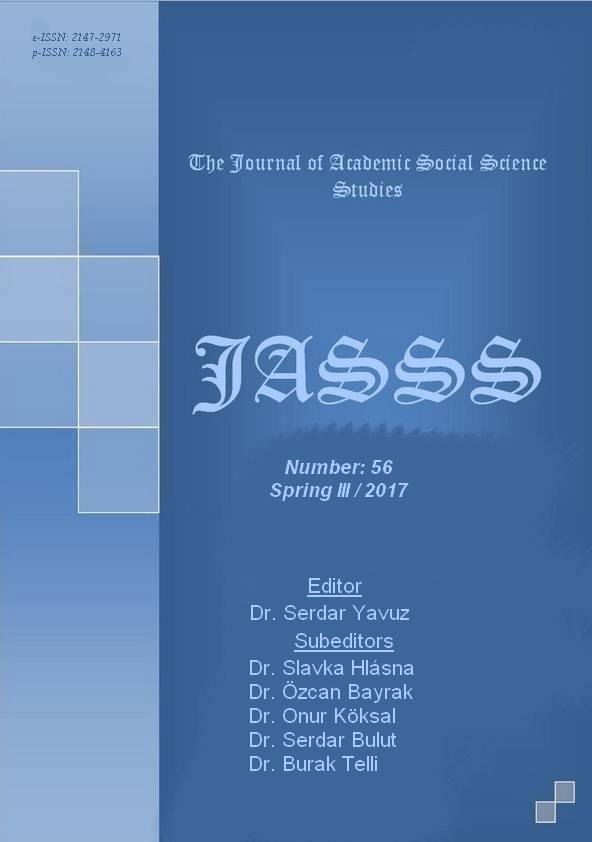OSMANLI’DAN CUMHURİYET’E MİRAS KALAN BİR MESELE: YURTLUK-OCAKLIK VE EMLAK-İ MAZBUTA MUKABİLİ MAAŞLARIN TASFİYESİ
Author :
Abstract
Osmanlı Devleti’nde idareci sınıfın tayini hususunda farklılıkların arz ettiği Klasik Sancak, Hükümet Sancak ve Yurtluk-ocaklık Sancaklar, imparatorluğun taşra teşkilatının belkemiğini oluşturuyordu. Osmanlı idari düzeninde ilk dönemlerden itibaren varlığı bilinen ve bu çalışmanın esasını oluşturan yurtluk-ocaklık sancaklar Tanzimat reformlarına kadar idaredeki yerini korumuştu. Yurtluk-ocaklık Sancaklarda yönetim hakkı irsi bir şekilde intikal eden mutasarrıfların uhdesindeydi. Bu idareci zümre, bölgenin fethinde önemli hizmetleri olmuş aileler veya genelde sınırda bulunan bu bölgeleri korumayı taahhüt etmiş hanedanlar idi. Buralarda tahrirler icra edilir, tımar sistemi uygulanabilirdi. Sancağın arazisi ve arazi üzerindeki hak ve yetkiler büyük oranda idareci zümrenin elindeydi. Yaklaşık üç yüz yıl boyunca bu şekilde kurulan bir idari mekanizma çağdaş reformların uygulandığı Tanzimat dönemindeki değişim ve dönüşümden nasibini alacak ve yurtluk-ocaklık sancak ve araziler devlet tarafından zapt edilecektir. Yeni düzende merkezden atanan idareciler tarafından yönetilecek olan bu sancaklar, zamanın gerektirdiği ıslahatlar kapsamında daha modern bir idari teşkilata kavuşacaktır. 1839’da ilan edilen Tanzimat Fermanı 1845’ten itibaren Doğu ve Güneydoğu Anadolu’yu da içine alan bölgede yürürlüğe konmuş ve bu kapsamda yurtluk-ocaklık sancakların çokça bulunduğu bu mıntıka esaslı bir transformasyon sürecine girmişti. Hükümet sancaklarda bu düzeni hemen kabullenmeyen çeşitli hanedanlar ortaya çıkacak ise de yurtluk-ocaklık olarak idare edilen sancakların eski idarecilerine maaşlar bağlanarak herhangi bir ayaklanmanın önü alınacaktır. Bu maaş sisteminin hangi esaslara dayalı olarak vaz edildiği, sürecin işleyişi, yaşanan sıkıntılar ve çözüm yolları Osmanlı arşiv belgeleri ışığında değerlendirilecektir. Cumhuriyet döneminde de ödenmeye devam eden yurtluk-ocaklık maaşlarının tasfiye süreci için Cumhuriyet ve TBMM arşivlerinden elde edilen belgelerle uygulamaların kanuni takibi yapılacaktır.
Keywords
Abstract
In the Classical Sanjak, the Hukumet Sanjak and Yurtluk and Ocaklik Sanjaks the differences in the appointment of the administrative class in the Ottoman State were the backbone of the provincial organization of the empire. Forming the basis of this study, Yurtluk and Ocaklik Sanjaks which is known to have been existed since the early period of Ottoman administrative system maintained their places until the Tanzimat reforms. The right to govern in Yurtluk and Ocaklik Sanjaks was held by the governors to whom they gain this right hereditarily. This ruling group was the families that had important services at the conquest of the region, or the dynasties committed to protecting those regions, which are generally on the border. In these places, censuses (tahrirs) were performed, the timar system could be applied. The land of Sanjak and the rights and authorities on the land were substantially in the hands of the administrator. An administrative mechanism established in this way for nearly three centuries had its own share from the change and transformation of the Tanzimat era in which contemporary reforms were implemented; as a consequent, yurtluk-ocaklik sanjak and lands will be captured by the state. In the new order, these sanjaks, which will be governed by the administrators appointed by headquarter, will have a more modern administrative structure within the scope of the reforms that its era requires. Declared in 1839, Tanzimat Firman was put into practice since 1845 in the region that covers East and Southeast Anatolia and in this context, this region in which yurtluk and ocaklik sanjaks situated went through a drastic transformation process. In Hukumet Sanjaks, there will be various dynasties that do not accept this order immediately, but salaries will be paid to the old administrators of the provinces and any probable uprising will be suppressed. The basis of this salary system, the process of its operation, the experienced troubles and the ways of solution will be evaluated in the light of Ottoman archive documents. For the process of liquidation of the yurtluk-ocaklik salaries that were continued to be paid in the Republican period, legal proceedings of the applications are going to be done through the documents of Republic and TBMM (Turkish Grand National Assembly) archives.





